Thank you every well wisher, friend, family, and creative commenter. Being isolated in a rough environment has a lovely way of distilling values and trimming the fat from life. Climbing the BugWall has given me the opportunity to examine my motivations honestly. I have been alone with the concept and practice of entomophagy for the past two weeks. Eating insects day after day on the BugWall for me was no hurdle. It was not shocking or really even noticeable on a daily basis. Bugs are food. What did surprise me was the love and support I received from nearly everyone with whom I discussed the project. Thank you all, you kept me going strong for 12 days of climbing and 1 long hard day hiking down.
Day 1
I said goodbye to the ground for 2 weeks and set sail on El Capitan’s high granite seas. Having already fixed (climbed and attached ropes to a high point) the first 4 pitches (pitch = about how far you can climb with one 200 ft rope), I ascended 2 ropes tied together and hauled gear about 500 feet up the route. These tasks took a little longer than I imagined, but the 2:1 ratchet hauling method I learned from “Pass the Piton Pete” made my life much easier, especially when it came time to pass knots through the mechanical pulleys. After hauling my 200-pound bug circus (gear, food, and water for 2 weeks), I climbed to Anchor ledge and the next pitch, but stayed on Anchor ledge to enjoy the last rock ledge I would see for the next 7 days. The first day was really long, I climbed till about 10:30pm and collapsed into my portaledge without even bothering to cook dinner, just shoved a few cricket bars in my mouth and passed out seriously wondering if I had what it takes to climb the thousands of vertical feet stretching into the sky.
Day 2
Vertical progress was more confidence inspiring on the 2nd day. I ascended the rope fixed to the top of pitch 6 and negotiated the Seagull traverse pretty easily. A new technical issue for me on the route was learning how to reverse pitches that moved more to the side than straight up. This is not an issue when you have a partner than can simply ascend the rope behind you, but soloing requires climbing up, returning to the belay, then climbing up again. Sitting atop the Seagull, wondering just how I would reverse the pitch, it finally occurred to me that I could rappel the separate rope for the haul bags. Rappelling the haul line and ascending the rope worked really well, making the rest of the heavily traversing pitches way more manageable. Having negotiated the Seagull, I blasted the 7th and 8th pitches in enough time to make some C-Fu mealworm tofu soup and Bugeater Foods cricket rice for dinner. Being back on track, with a satisfying meal in my belly, I went to bed that night full of renewed hope.
Day 3
The third day on the wall began to finally feel committing and serious. I had now climbed the traversing Seagull pitch which would be difficult to reverse. Going up from was rapidly becoming the easiest way home. Pitches 7 and 8 climbed smoothly, but the temperatures were dropping and the weather forecast was cause for concern; there was a 100 percent chance of rain by 11am for the next day. I had never climbed the middle section of El Capitan and didn’t know how badly storms would affect the climbing. Other parts of the formation are so steep, that rain only hits you if blow by the wind. Nevertheless, I still had time to enjoy a nice edible insect dinner with Bitty cookies, honey, cricket leather and a snoot of bourbon for desert. This was to become my evening ritual for the next 10 days.
Day 4
I have joked in the past, that everytime I touch El Capitan, it snows. However, with the 80-85 degree sunny days predicted for the climb when I first set sail; fulfillment of this prophecy seemed a ridiculous notion. Day 4 began overcast, but dry. I woke up very very sore, wondering how my body would make it 3 more days to the planned rest day on the Bismark. Not wanting to crawl out of my warm cozy sleeping bag, I slothed for an extra 25 min in bed that morning pondering the weather and the pain in my hands. Finally, I decided to ignore the 100% chance of rain and just go for it. A ‘shoot from the hip and roll with the consequences’ attitude defines much of my approach to climbing and life in general, why would today be any different?
I packed up my vertical bug camping circus and knocked out the 9th pitch in a reasonable time, feeling triumphant in my decision to climb that moring; everyone else was still wrapped up under their rain flies and I had already knocked out a pitch. As I was rappelling back down to my haul bags the sky opened up. No warning, no soft sprinkles – just a squall of rain and wind, the likes of which I’ve never been caught out in. I did have time to get my rain jacket and pants on before getting completely soaked and cold, but was still chattering and shivering for the next 2 hours as I had to clean the gear from the pitch and haul my bags with winds so strong that long lengths of wet heavy ropes were being blown vertically into the air. I even saw odd chunks of frozen sleet falling from the sky – El Cap curse fulfilled.
Just as I hauled my bags up to the anchor, the rain and wind cleared and thick fog rolled in like something out of the The Mist. Being on El Cap when fog rolls up the wall is a really surreal experience – you move from crazy vertical exposure to a creepy white insular blanket in less than a minute. Soon the fog gave way to some amazing views and a double rainbow arching right over El Capitan. I was soaked and more than happy to set up my portaledge, crawl into a thankfully dry sleeping bag, and fresh long underwear. I enjoyed some mealworm chili and an afternoon nap while my clothes and spirit dried out.
Day 5
Recharged with a hot meal and a half rest day, I felt great on the fifth day and charged ahead knocking out the famous Molar traverse with a big fun pendulum swing (pictured below). The next two pitches blew by quickly as well, and I was back on track, having climbed 3 pitches that day, I was back on track with the 2 pitch per day quota needed to top out with adequate food and water.
Day 6
The horror show of manky old bolts began on day 6. The Mescalito route is blessed with an abundance of natural features which means that for the most part, you’re placing your own protection pieces and removing them as you go – generally more enjoyable and challenging. Blank sections of rock however, offer no opportunity to place your own gear, these sections are equipped with long strings of existing hardware. I’m not sure what era that the hardware dates back to, but am willing to guess that much of it was original a.k.a scary. The little 1/4 inch diameter pieces of aluminum protruding from the the rock usually hold body weight, but will likely not hold the force of a body falling from some distance. The operative game with these manky strings of homemade crap is not to fall and be glad you’re a 120 – pound little lady.
The old Leeper hangers and aircraft rivets held and I was able to make it up to the top of pitch 16, but after 6 days on the wall, my body was starting to give out. Getting off of the couch and spending 2 weeks climbing a big wall is a major shock to the system. My legs were getting random charlie horse cramps at night and my hands took about 20 min of massage in the morning to be talked into grabbing anything. However, the skin on my fingers was doing surprisingly well. On pervious big wall climbs, the skin on my finger tips has been a limiting factor – as it gets ground away with day after day abuse. Knowing this would be an issue, was sure to use full finger gloves for all non climbing rigging tasks and thoroughly clean and coat my fingers in liquid lip balm each night.
Day 7
I arose on the 7th day feeling like a train wreck, but really excited to knock out what I thought would be 2 easy pitches of climbing and reach the Bismark ledge in time to do a video interview for the Emerald Planet TV show. The pitch started off pretty easy on the last few nasty old bolts then was supposed to gain an easy crack requiring to the anchor.
As I left the last piece of fixed gear and climbed up to the crack, my heart sank. I was not looking at the cruizer C2 crack described in the topo, but a thin, shallow seam with no fixed gear. This was going to be time consuming and difficult to climb. Luckily I had the gear necessary for such a crack with me: copperheads (little chunks of metal on a wire you mash into a seam with a hammer and wedge) and pitons (blades of metal you beat into cracks with a hammer). In this seam I could see rows of cut or blown old copperheads so I figured this must be the tool of choice and went to work trying to whack one of these janky contraptions into the rock. It was at this moment that I really began to wish that I had taken the time to practice heading somewhere on the ground. I had no idea what I was doing – but the metal was going into the rock and on the surface looked like other copperheads I’ve seen on the route. I gave it a pensive bounce test – it passed. Instantly filled with pride, I decide to step up and go to work placing my next copperhead. After 10 hammer swings into the second head, I felt the creepy feeling of the support beneath your feet giving way; I was sailing down the rock and was greeted with a quick stop and a surprising amount of pain in my face.
The fall had not been long, I had not hit anything large, but it was became crystal clear that I am a crappy copperheader. The head I was standing on had blown out of the rock under my bodyweight and as I fell, the copperhead I was working on flew out of the rock, hit me in the face, and gave my 1st black eye. Lovely. Now it was time to re ascend the rope and try again. This time I tried my little pecker piton (yes this is really what they’re called). This worked well enough to hold my body weight for the next placement. Subsequently, I placed 2 more peckers and made it through the seam section to easier ground. The falls were safe, just a little jarring. Even doing a live interview later that afternoon with a shiner didn’t matter; I had made it past the nasty section and was going to get to the Bismark ledge come hell or high water.
Day 8
Rest. Beautiful, beautiful rest! The Bismark ledge was everything I thought it would be: big, flat, full of sunshine and a nice breeze. With 1 solid week of climbing with virtually no physical ledges to stand on behind me: I slept in, stuffed my face, sorted my gear, and recharged my soul.
Day 9
After the much much needed rest day on the Bismark, I was ready to tackle the infamous wide pitch above the Bismark ledge. I had heard all sorts of horror stories about falls, wood blocks and belly flops. I approached the wide section of the climb with many reservations, but was pleasantly surprised to find that the moves aided easily with the gear I had and only required one chicken wing move to finish and was topped with another nice ledge which made the perfect stopping point for some whole roasted Next Millennium Farms crickets. The next pitch, however, was fairly involved. Taking most of the day to climb, I didn’t crawl into my sleeping bag that day until well after 9pm.
Day 10
The next two pitches on day 10 went by smoothly, the dangerous climbing at the base of pitch 21 was easily protected with the use of a couple of pitons. In general its best to try not to use pitons, as this type of gear is more damaging to the rock, but when they’re the best type of gear for a placement and a fall would result in injury – ethics go out the window for the sake of unbroken ankles. By then end of the day, I was sleeping only 4 pitches from the summit with my BugWall pirate pedicure still intact.
Day 11
I woke up on the 11th day of the climb extremely sore. Proper hand function now meant a steady regimen of anti inflammatories and the leg cramps at night were getting worse, despite staying pretty well hydrated. Since the initial forecast for the climb was in the 80’s I budgeted 4.5 liters of water per day, packing a total of 50 liters for the whole climb. With average temperatures beautifully in the low 70’s, I had plenty of water, but my muscles were finally giving in to total exhaustion.
Despite my slow crawl out of bed that morning, the climbing was straightforward and I easily climbed 3 pitches. Ending the day ONE pitch below the summit. The top was so close I could taste it, but pastEl Cap experiences have taught me to ignore the screaming summit fever and wait for daylight to top out. Anchor rigging on the sloping ramps atop El Capitan can be tricky and easily bungled in a mad dash to get off the ride. 5 years ago topping out on Zodiac, I dropped a bunch of cams and seriously damaged a rope (that I was hanging on!) in a desperate attempt to summit exhausted and in the dark. So I waited. I stopped at a reasonable hour, had one last nice hot mealworm italian sauce / cricket dinner and a cricket protein shake, enjoying my last night on the BugWall.
Day 12
Sleeping in, enjoying my cozy sleeping bag and beautiful sunrise – my 12th day on the wall – I felt like a kid waking up to attend the last day of school before summer vacation. I was excited, but it had been a really long time since I’d seen ground. Its existence had shifted into the distant memory bank of my brain, its reality I now questioned. The whole time I was climbing the last pitch, I kept waiting for something to go wrong.
But it didn’t. The last pitch was primarily a bolt ladder composed of shiny new super safe bolts. Compared to ancient homemade manky bolts guarding the rest of the route, these were a dream to clip. I climbed right up to the summit, fixe a line far back to a safe unroping point, cleaned the gear from the pitch and hauled the rest of my gear to the top by 3pm.
Having plenty of extra food, water, and bourbon, I spent one last beautiful evening on top of the world.
Day 13: The long hike home
Odious, evil, scheming … just barely describes my feelings toward the East Ledges descent. Every vertical foot (2800 of them) that is climbed up over nearly 2 weeks must be descended. I had the bright idea that this should all take place in 1 day, alone, with 2 extremely heavy, large haulbags to shuttle down. Why not? Gravity is on your side right?
I awoke late Saturday morning, had one last Cricket Flours oatmeal breakfast, 2 cups of coffee, then read for about an hour before beginning the descent. The smaller haul bag was about 50 pounds (nicknamed Chubby Charlie), while the bigger one was closer to 60 pounds (named Soul Crusher). I began by hiking one bag down about a 1/4 mile, then hiking up, grabbing the other bag, hiking it back down, passing the 1st bag, hiking down another 1/4 mile, stopping, then repeat. This was working …. working lovely blisters into my feet and very slowly slowly winding my way down the granite slabs. The day was getting hotter, and I spent most of the time trying to convince myself that pain is a normal part of walking.
Not far from the first of 4 rappels, I ran into a fine gentleman name Deano that had hiked up the East Ledges looking for lost gear at the top of El Capitan. Having not found the gear, he was hiking back down when he passed me around 3pm. I must have looked pretty pitiful after 13 days on El Capitan, shuttling loads that made me look like a haulbag with legs. Deano offered to carry down one of the bags for me. Had he offered such a blessing at 10 am that morning, I probably would have pridefully declined. At that point in the day, I was more than happy to accept his generosity. We hiked to the rappels, rappels with the loads, and hiked another hour or more to the parking lot. Thank you Deano!
Tired, dirty, and hungry, I took the shuttle back to the El Cap Meadows parking area, and arrived to find that my car was missing. Several of the climbers in the meadow informed me that it had been towed when they decided to pave the roads a few days prior. Another kind climber gave me a ride to the garage where I was informed that even though no signs about a tow zone were posted when I parked, my car would not be released unless I paid a $129 impound fee. Welcome back to real world!
With no other choice, I paid the fee, caught the last hot shower and bite of hot pasta in the Valley and hiked back to the base of El Capitan. The next morning I ascended the rope I had left fixed to retrieve it, picked up some trash at the base, hiked back to my car, packed up, and drove to a girlfriend’s house in Davis, CA.
Its now been 4 days since I got down from the BugWall, my feet are still blistered and Im still walking around very slowly, and my black eye is healing. However, one major oversight of the trip was packing a hair brush. As my hair was in a braid in the beginning of the trip, I wasn’t paying any attention to it. 5 days into the climb, I took my hat off and finally realized that a giant dreadlock had begun to form on top of the braid. Attempts to cull it at this point only seemed to make things worse. By the end of the trip, it was basically one giant dreadlock. Many hours in the shower with loads of conditioner worked out all but 2 big stubborn knots. Finally out of frustration, I roped my friend Claire into lopping it all off above the knots for a cute shoulder length bob.
All of the awesome large-scale climbing photos were taken by Tom Evans down in El Cap Meadow and first featured on El Cap Reports. Thanks for your support Tom.
Thank you all for coming with me on the BugWall. Don’t forget, many of the super-power edible insect foods consumed during the BugWall are still available on our Indiegogo campaign. All profits benefit edible insect outreach programs of Little Herds. Add a little hop to your next adventure:
26 pitches of climbing + 13 days on El Capitan = 100% edible insect fueled

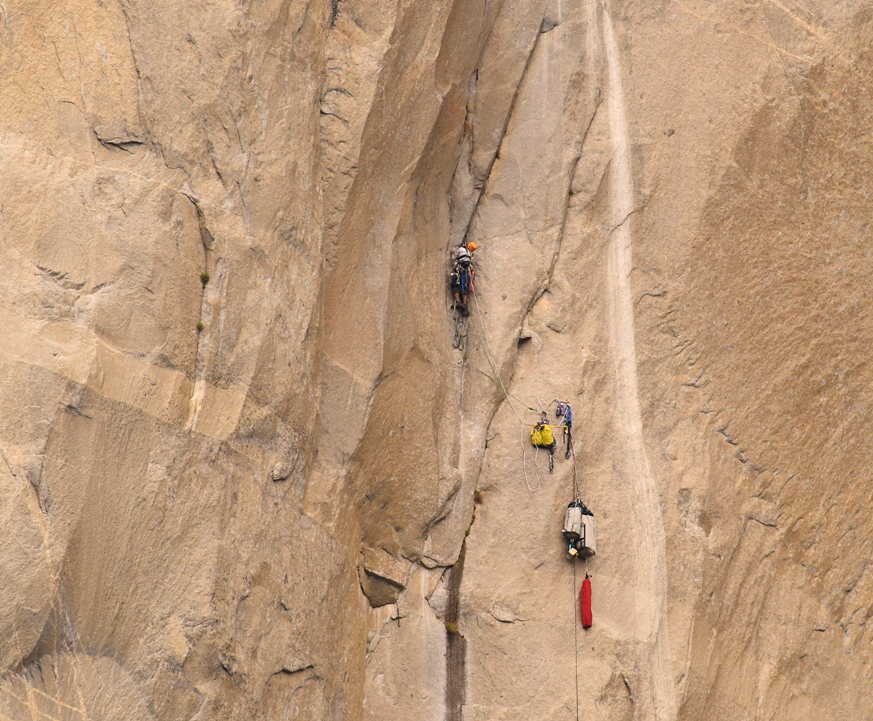

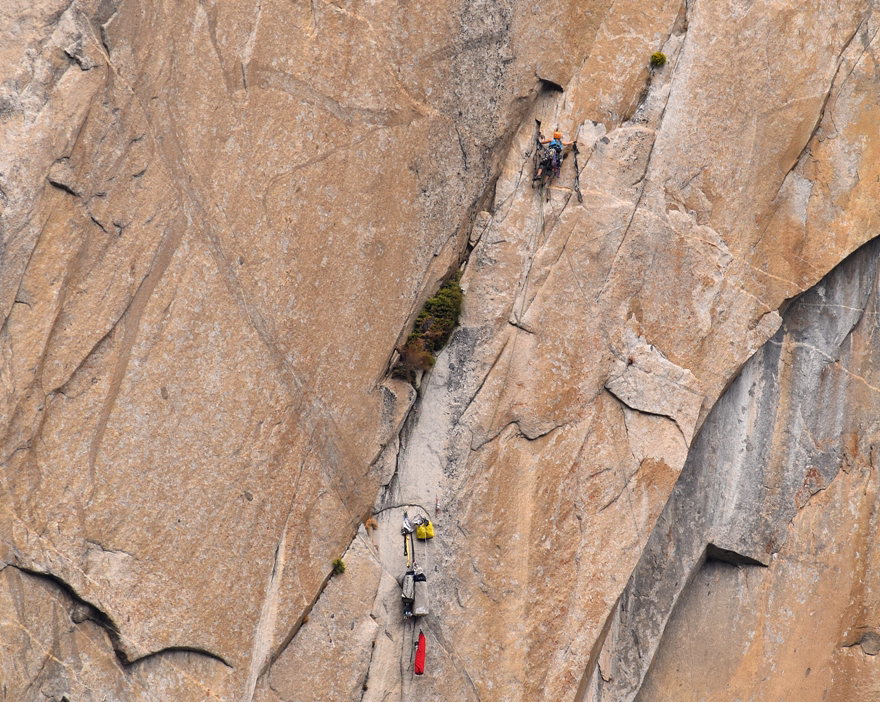
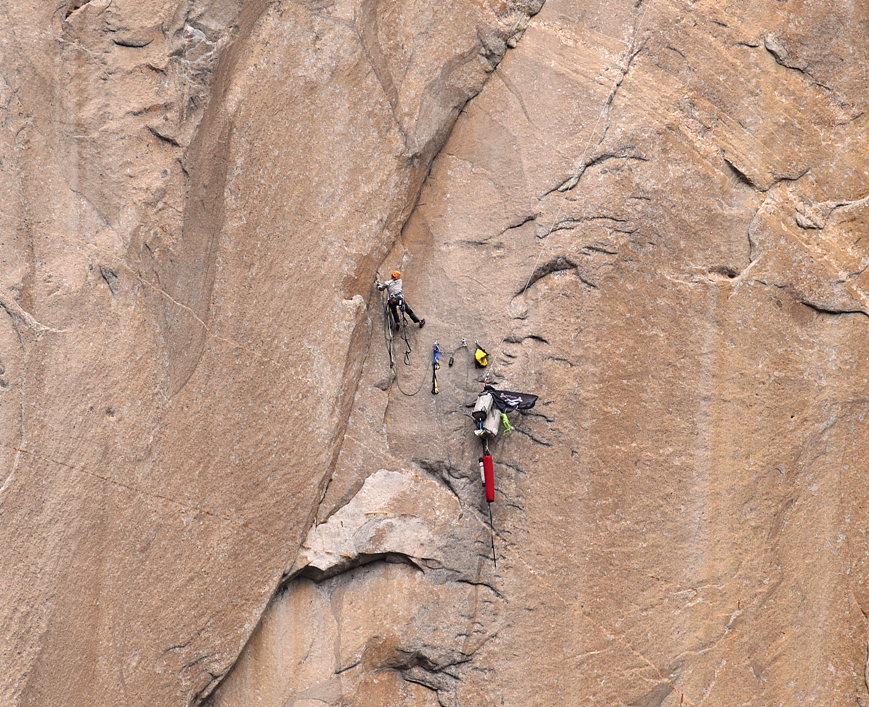
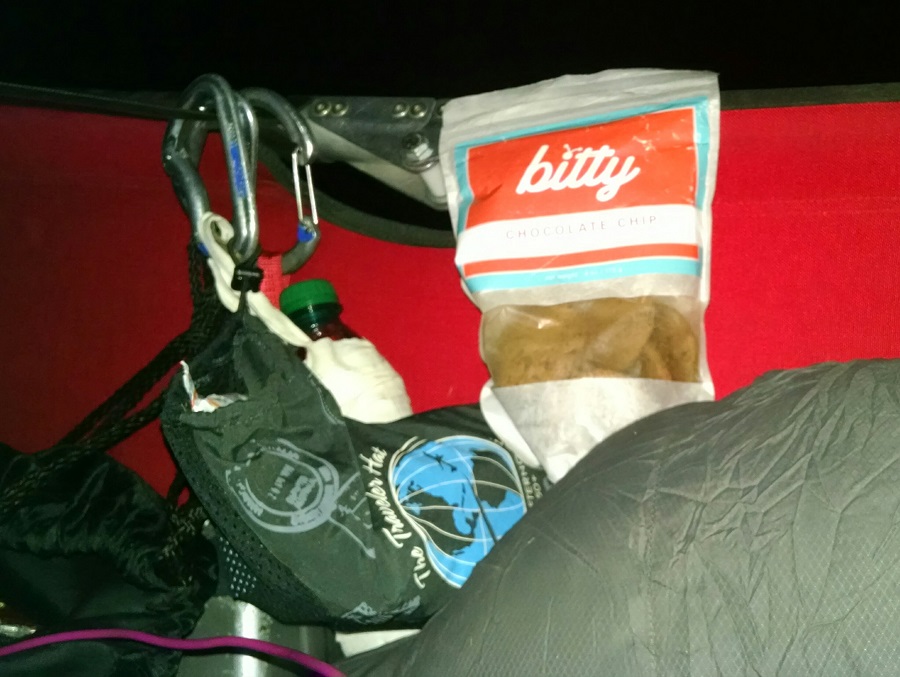
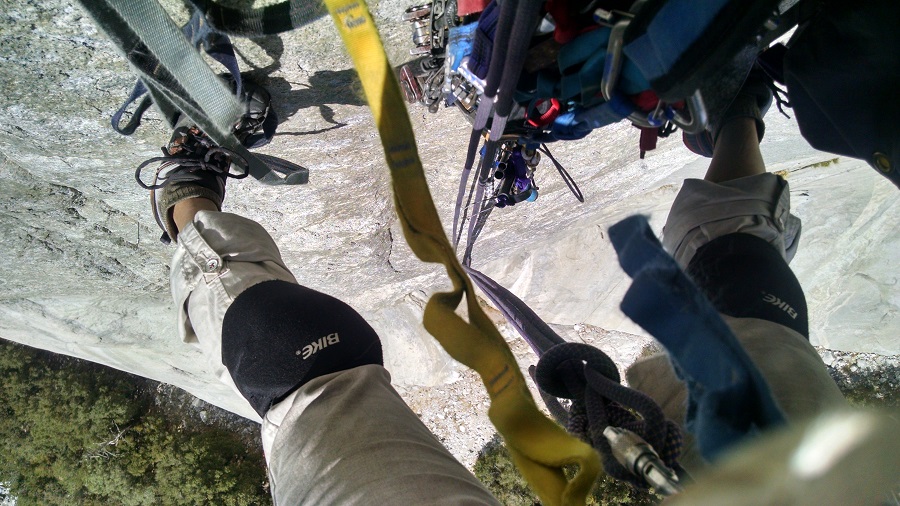

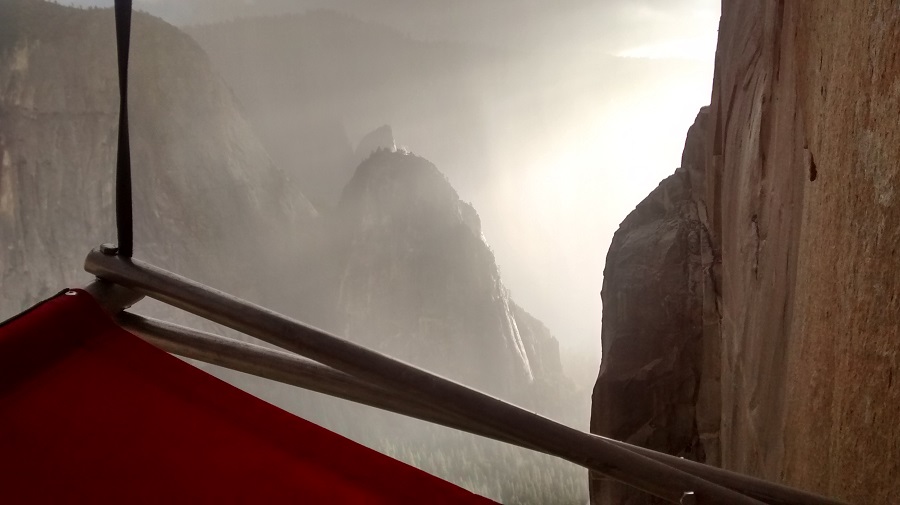
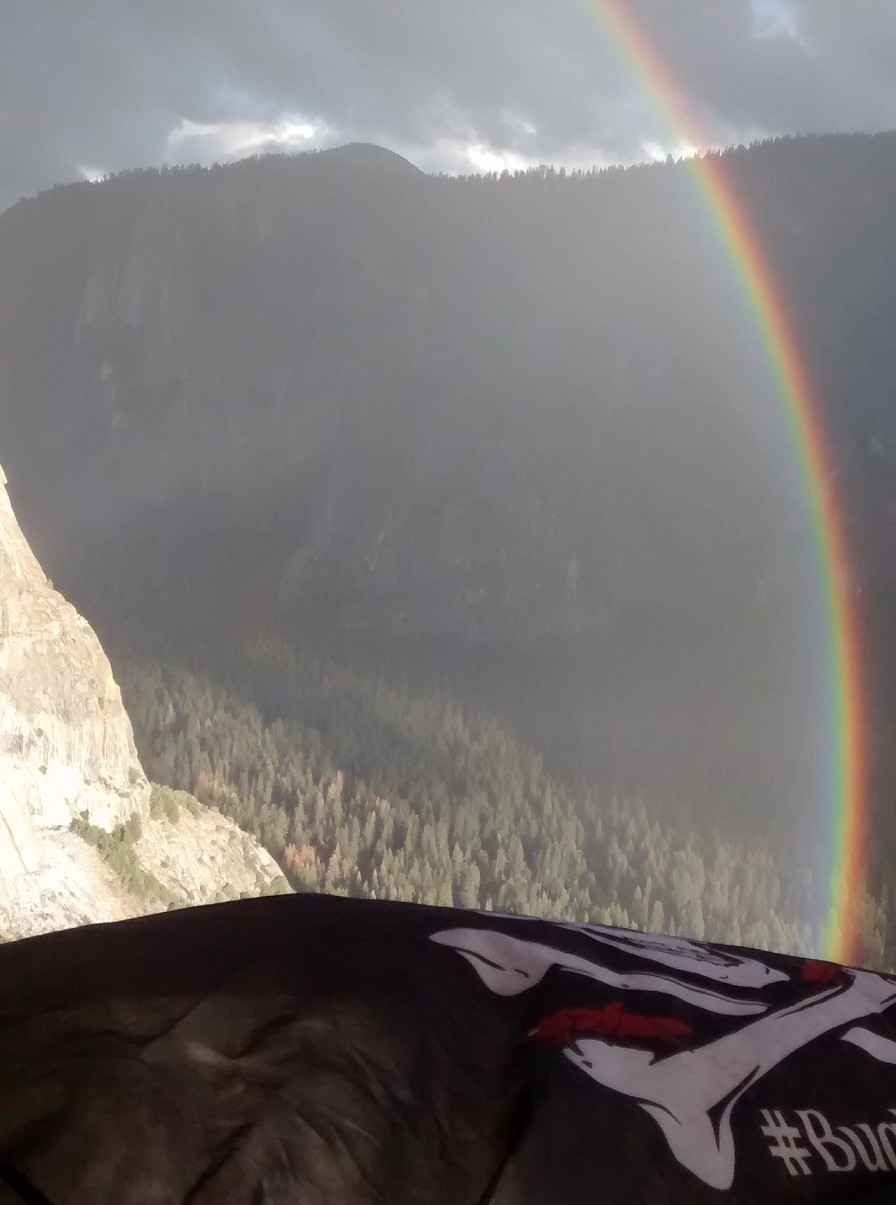
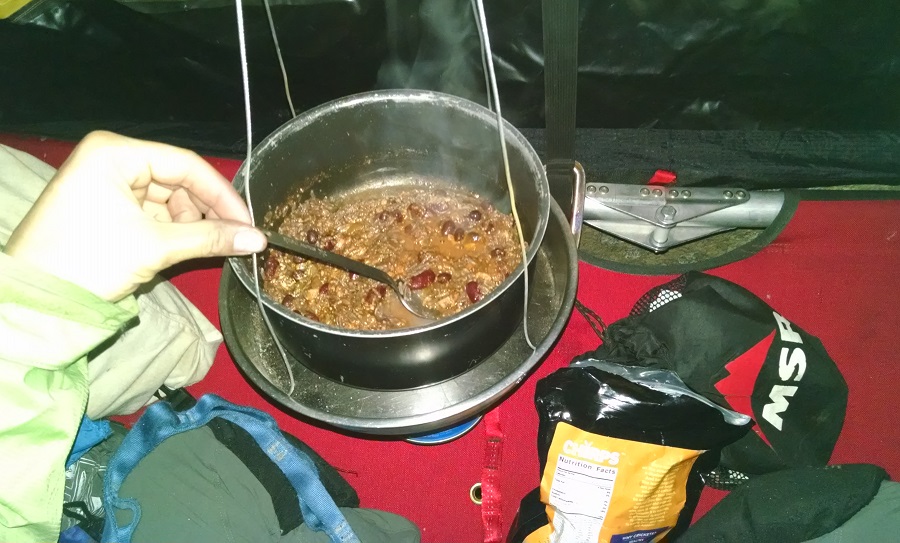
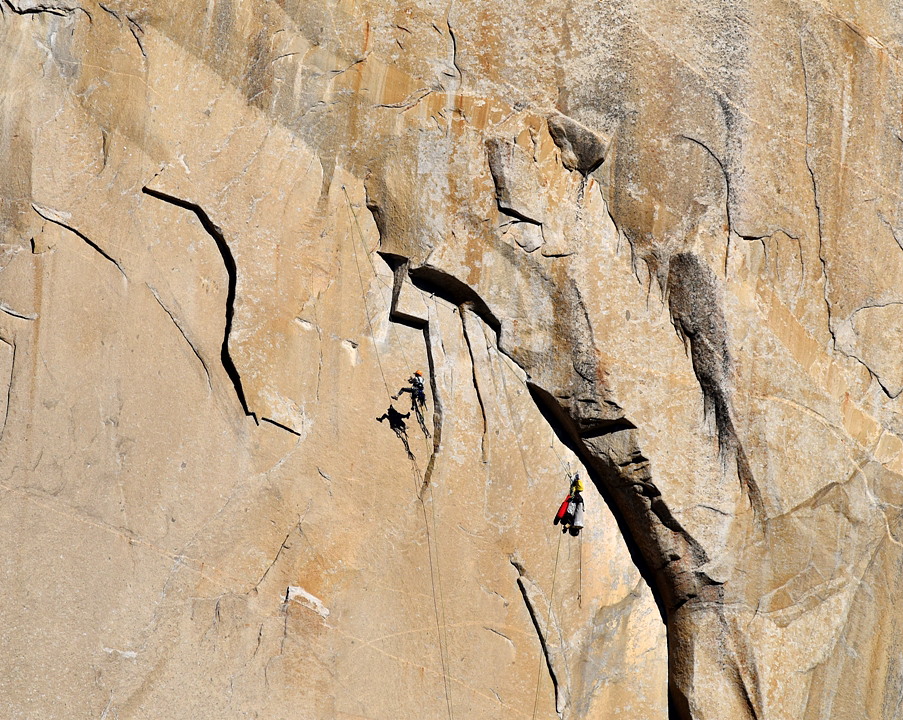
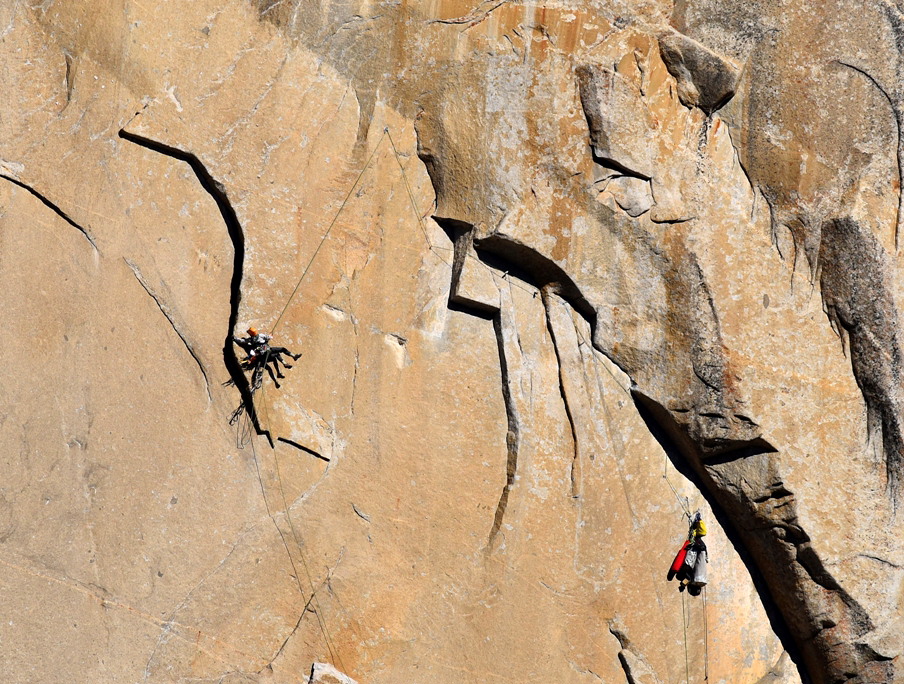
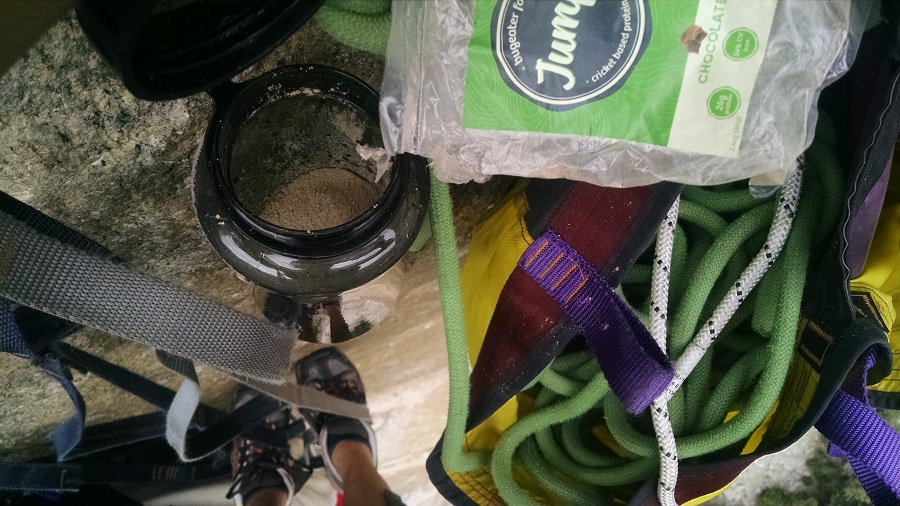

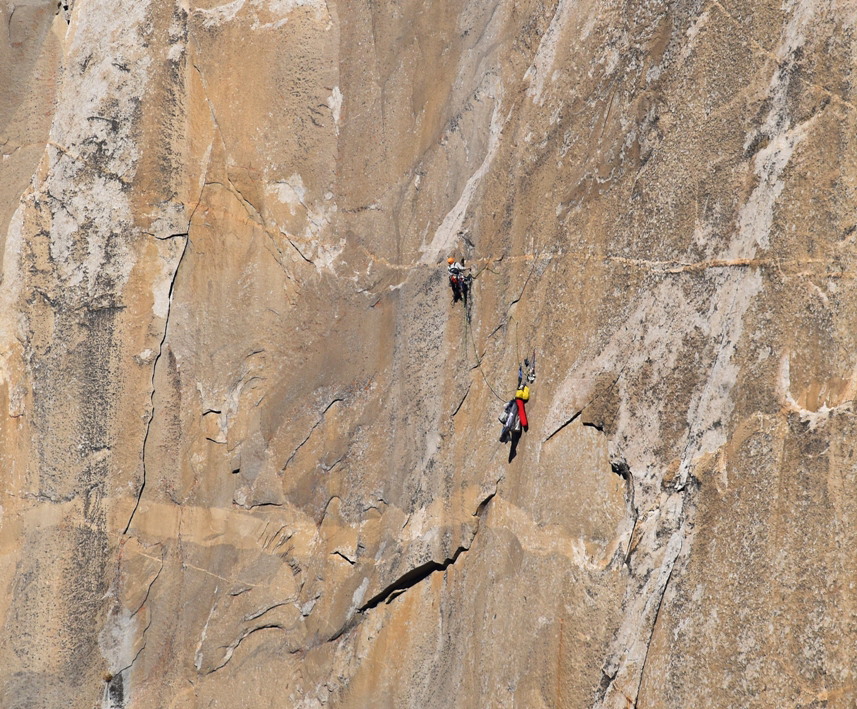
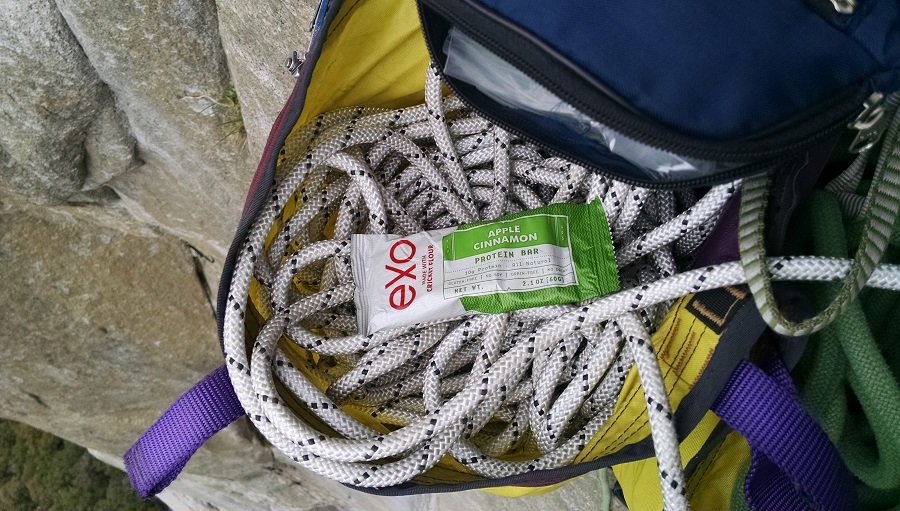
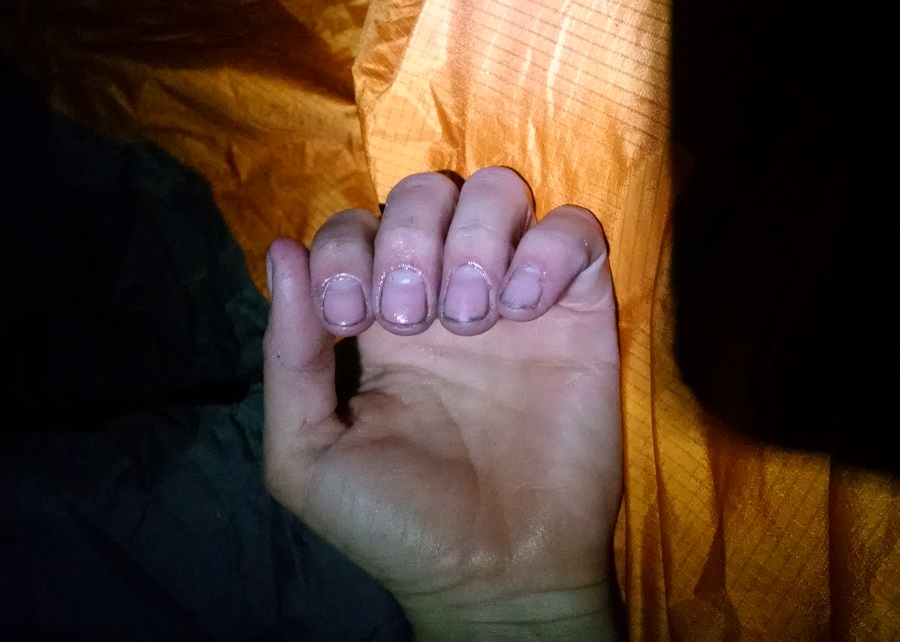
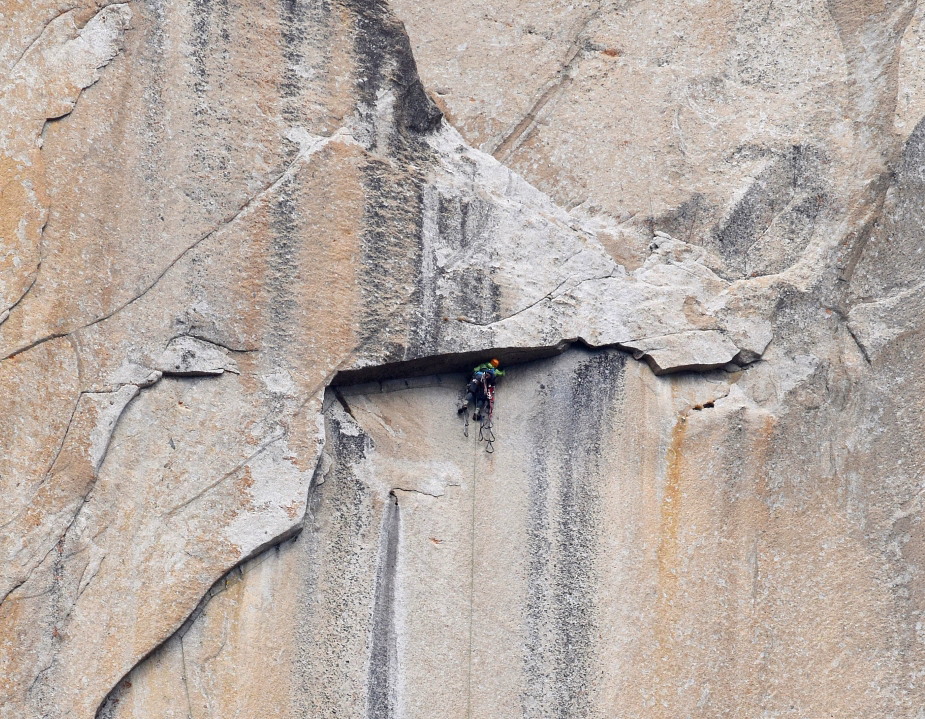
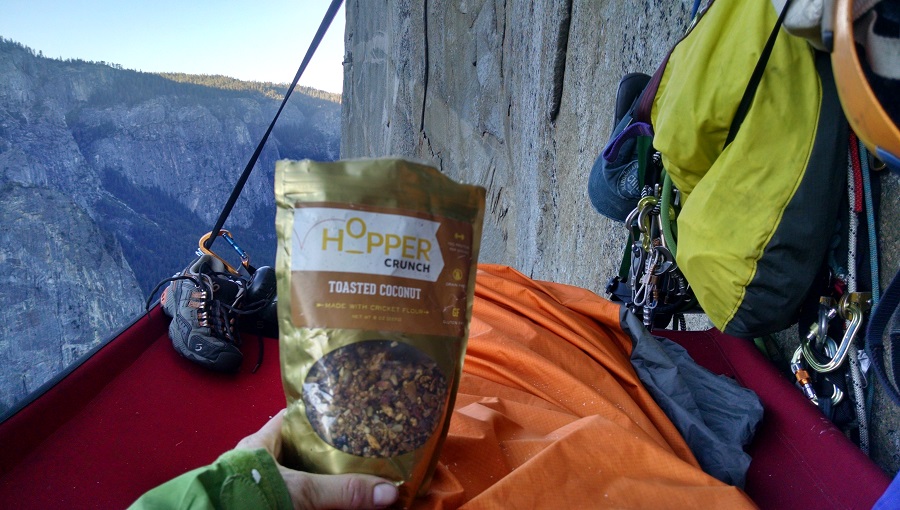

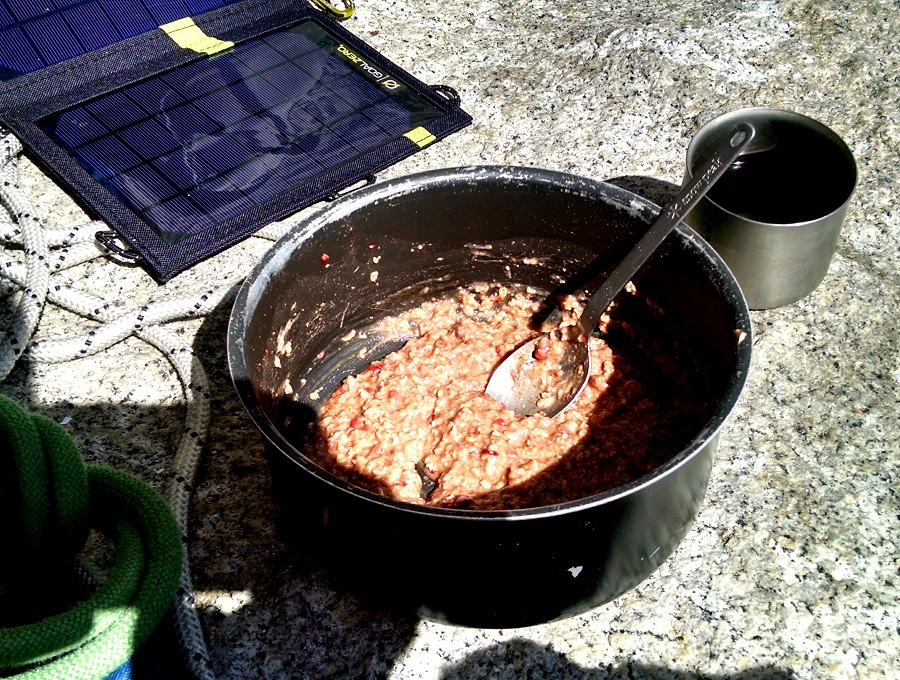

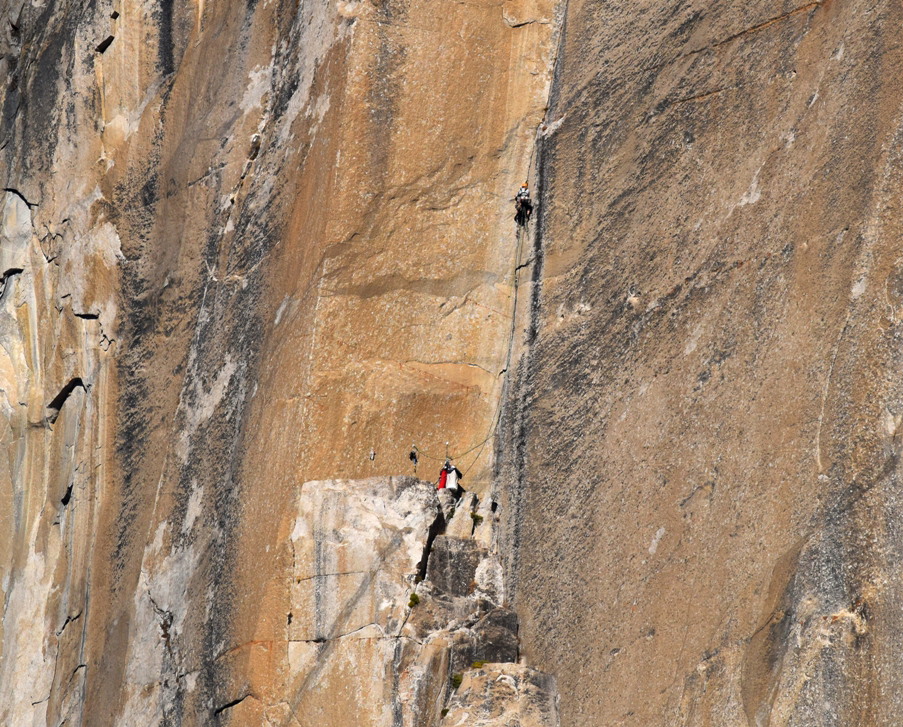
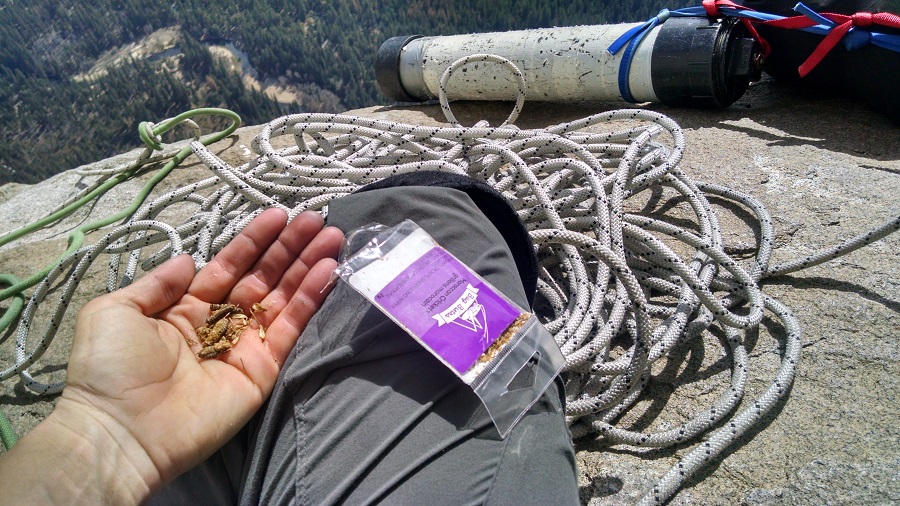
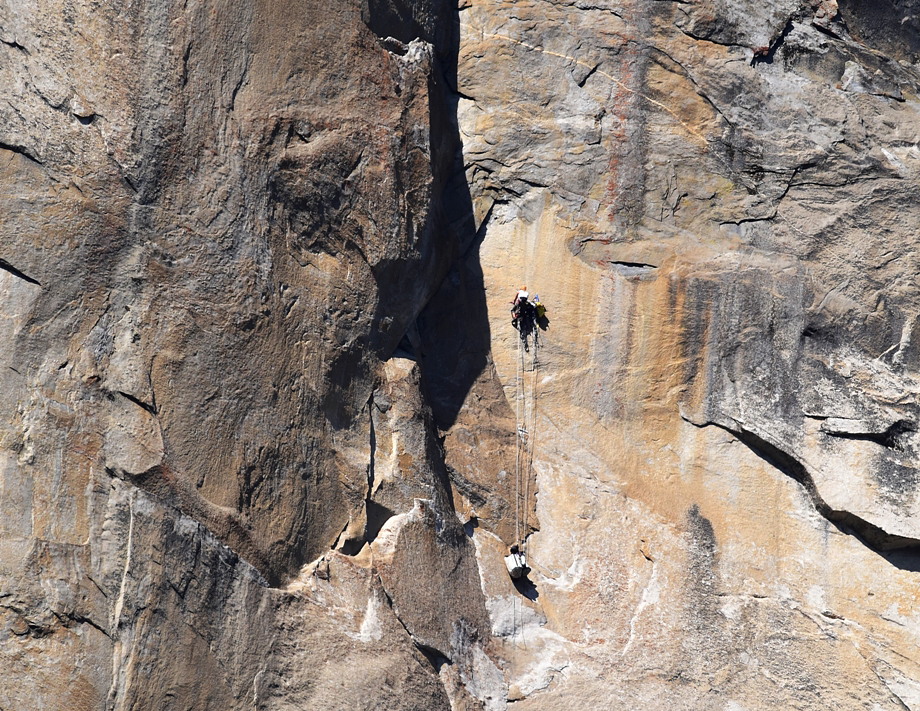
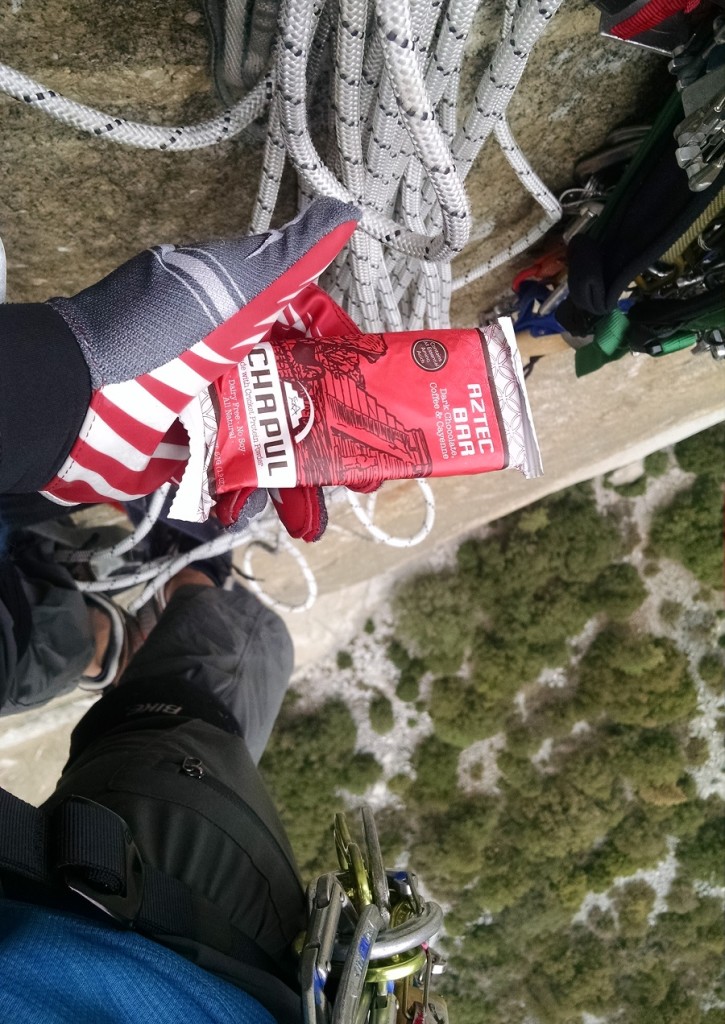
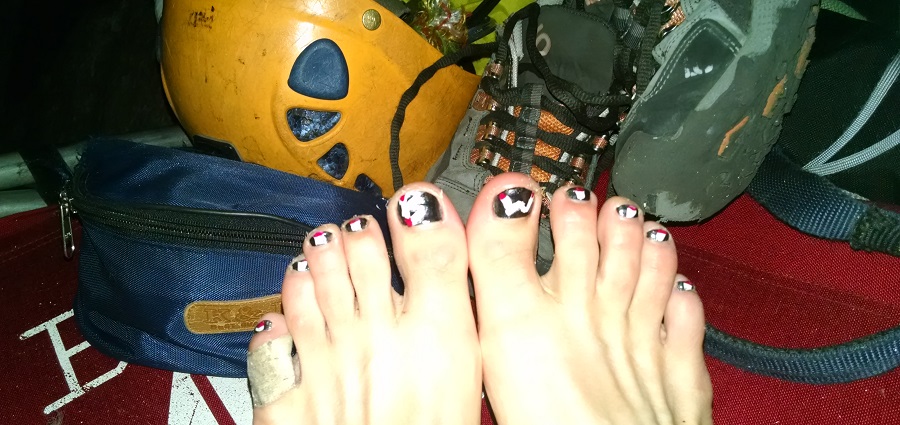
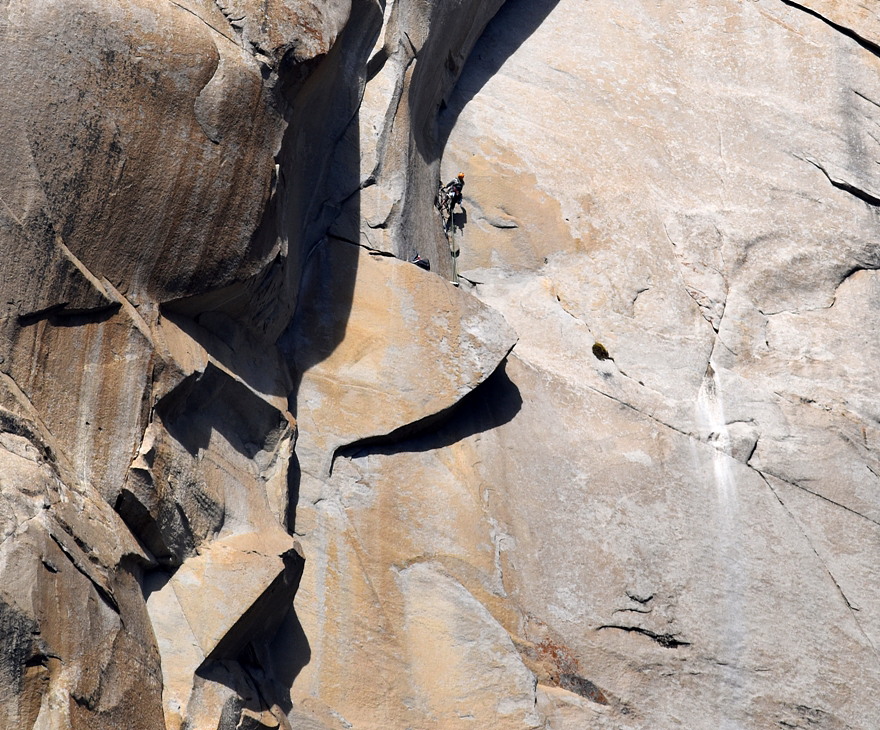

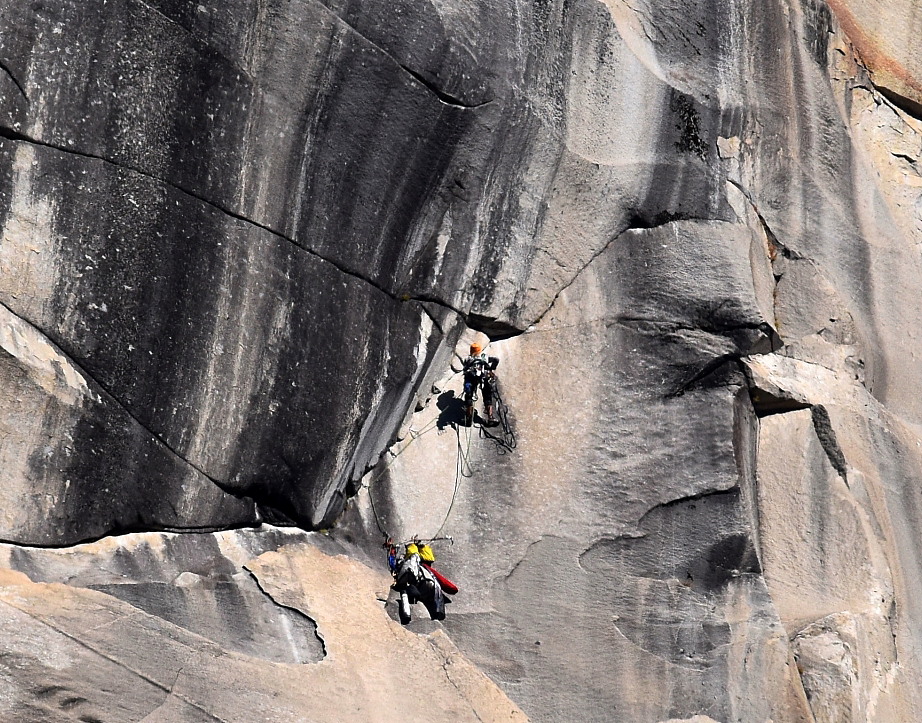
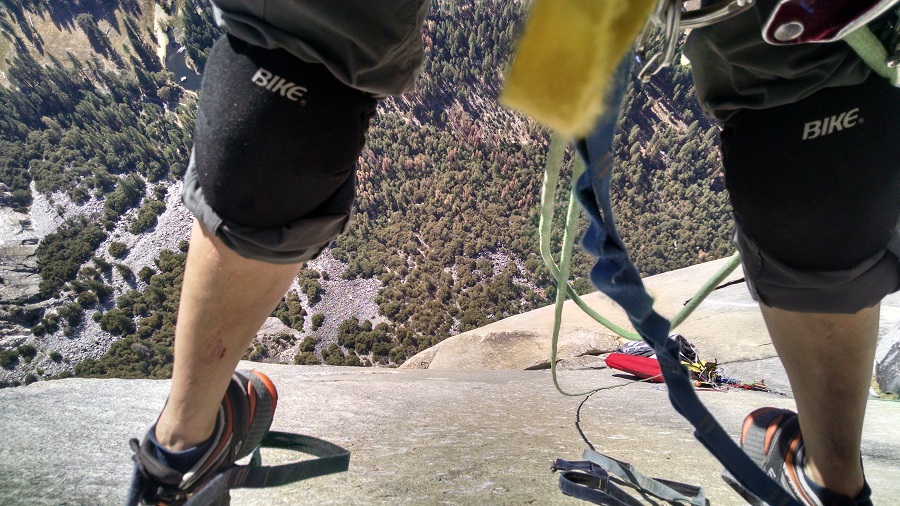

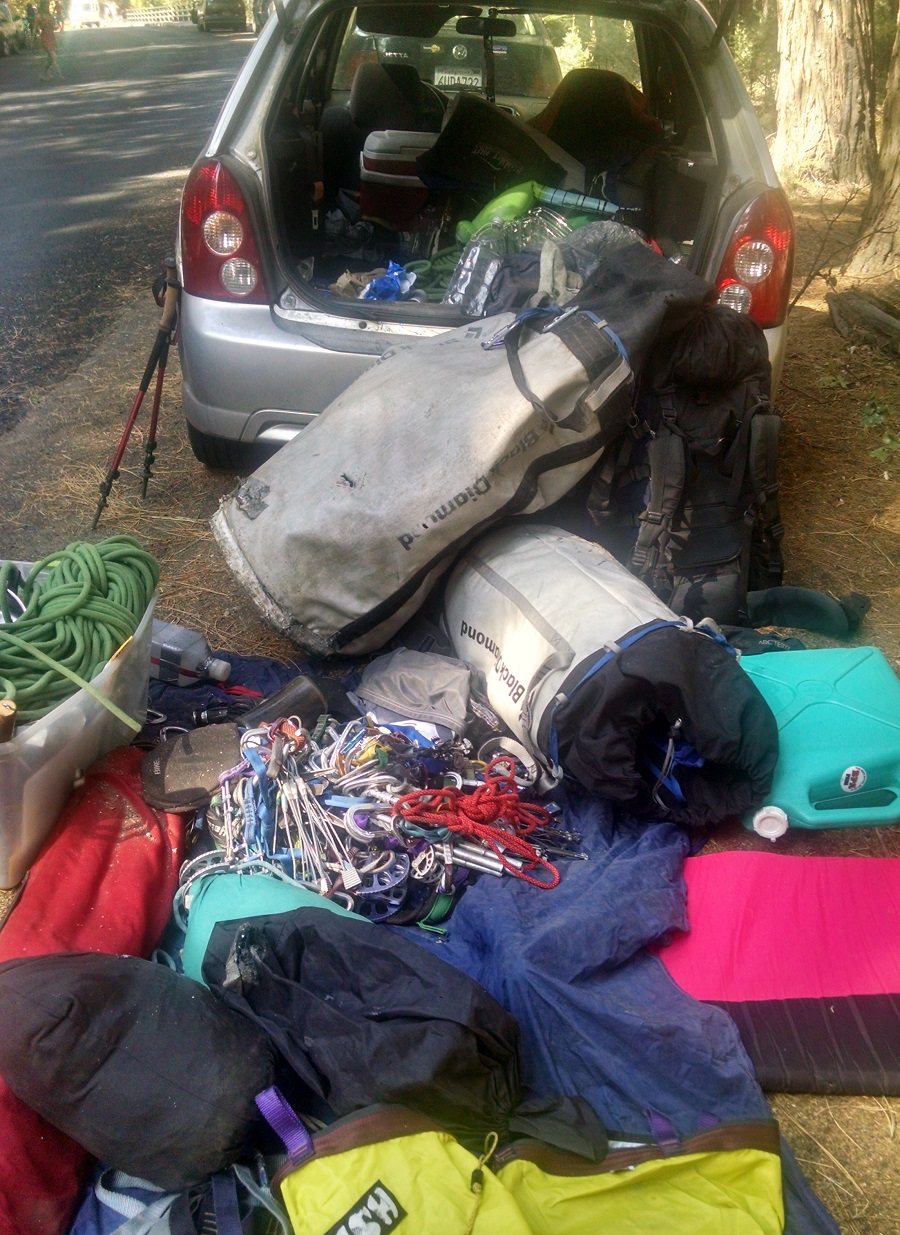

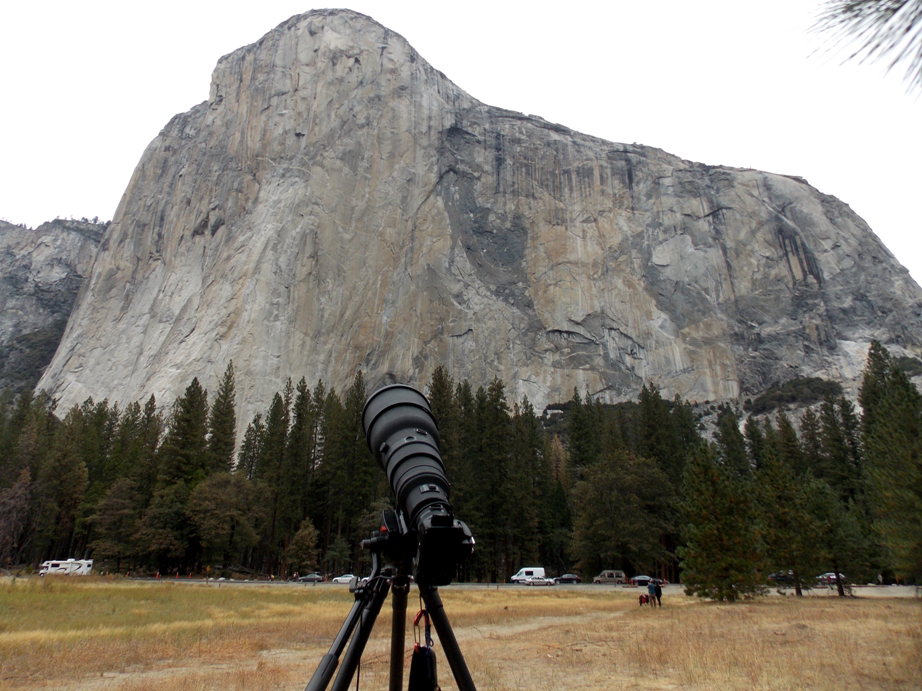


Way to go! I feel I have vicariously ascended Mescalito and can now skip that “right of the Nose, left of the Zodiac phase” of my climbing career. Many thanks.
Your fan,
Verm
I am a large inflatable ant who escaped from your bivi somewhere around the Molar Traverse. I crawled over to another team further right and sailed the granite sea with them instead. I was an excellent belayer, but feared to crawl out on lead. El Cap is bigger than your average ant hill, and at times I felt deflated. My new climbing colony was slow, and we reached the summit a day after you had finished. I like my new colony and hope to crawl with them again.
Anthony
Well done Madam Curry,
Those of us that know you are proud but not exactly surprised. (That you could, that you would, or that you did )
Huge effort, well done! I really enjoyed reading your trip report, especially learning to clean “on the job” and ripping your first head… Beaks! I was on Zodiac when you were on Bismark. Good times!
yOU ARE an incredible woman. Incredible.
Great report. I wondered what the story was around the inflatable cricket was on Toms pics, now I know. Thanks.
Way to go Meg!! I was really psyched for you! I really enjoyed this report… I keep forgetting how the hands and legs suffer on these big ElCap climbs… Now I remember! Hope to see you on the Cap in the near future!! Enjoyed the “bug” stew in the meadow!
Tom Evans
Awesome ascent! If those aluminum rivets are original ones, I made them at home in the summer of 1973. The Bismark originally was the the upper ledge and the bottom comfy ledge was at the bottom of the Bismark. On the 1st ascent we had top out fever too, we made it to the last pitch when it turned dark. We had friends on top that kept yelling to us that they had a huge pot of stew. Charlie Porter had to calm us down and tell us that tomorrow was another day. Thanks for the trip report, what a flashback and what a great job you did. As we used to say “Cool”.
Much more impressive that Alex’s more recent solo ascent!